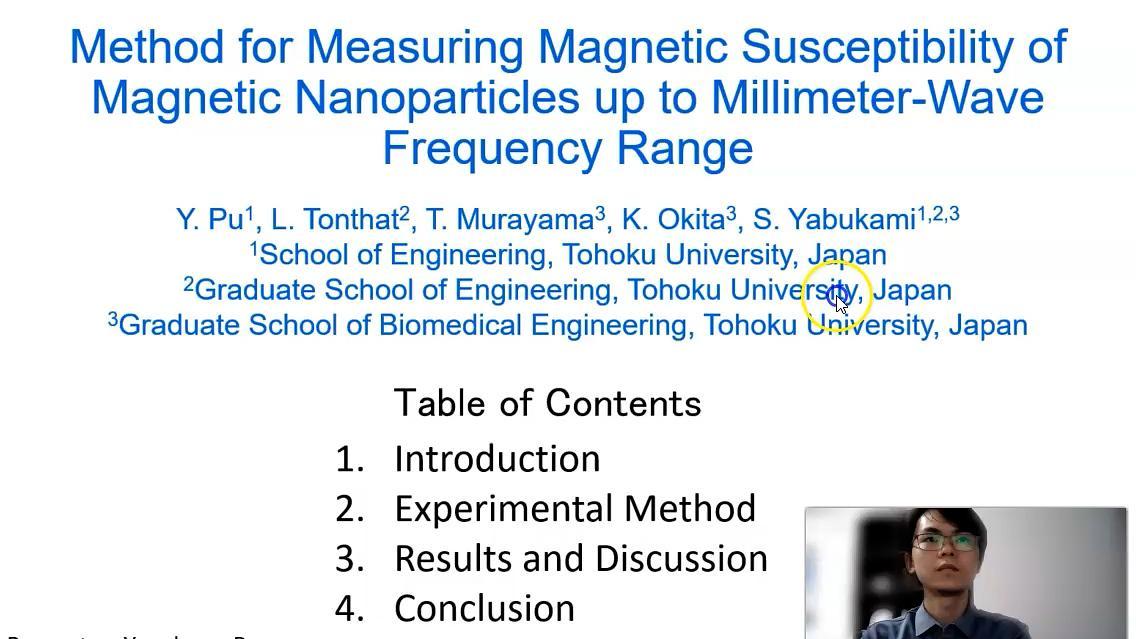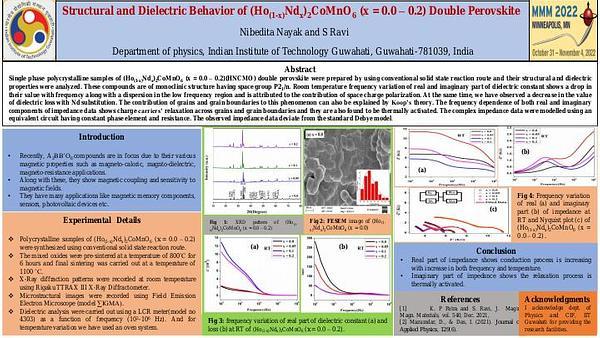
Premium content
Access to this content requires a subscription. You must be a premium user to view this content.

technical paper
Method for Measuring Magnetic Susceptibility of Magnetic Nanoparticles up to Millimeter Wave Frequency Range
Susceptibility measurement of magnetic nanoparticles (MNPs) in radio frequency (RF) has been widely studied. However, most of the studies only examined frequencies
up to 20 GHz 1. In addtion, applying two axial DC fields to increase resonance in specific frequency range and magnetic susceptibility has hardly been done before, since applying a
single static DC field is more common 2-3. The MNPs can be used for magnetic hyperthermia and biological substances detection 4-6. In this study, we proposed a novel method for
measuring magnetic susceptibility by a broadband microstrip line type probe up to 67 GHz 7. Fig. 1 shows the basic principle of the experimental setup. The microtube with MNPs
(SVM-025-5H, 200 nmf, about 300 ml) was put on the microstrip line type probe, which is connected with a network analyzer (N5227A) to generate a magnetic field in a range of 10 MHz
to 67 GHz. The MNPs were put between two electromagnets connected with power supplies to generate a changeable DC field up to 1000 Oe and another orthogonal about 35 Oe DC field.
When the two orthogonal DC fields are around equal, the magnetic susceptibility of MNPs should maximize because of the magnetic switching theory 8, which results in enhancing the
signal to noise ratio. By applying the bias magnetic field, we measured the transmission coefficient, S21, of the microstrip line type probe and obtained magnetic susceptibility 7. Fig. 2
shows the magnetic susceptibility when the DC field ranges from 0 Oe to 1000 Oe. In the DC field around 0 Oe, the magnetic susceptibility was very low because the MNPs were relaxed.
However, in the DC field of 25 Oe-75 Oe, we observed clear magnetic resonances in 20 - 40 GHz. The resonance frequency increased as the DC field increased. In this case, both fixed and
changeable DC fields are around 35 Oe, which means the magnetic susceptibility is biggest at this condition and the orthogonal DC field enhance the signal to noise ratio to detect magnetic
nanoparticle. The clear magnetic resonance of MNPs has hardly been observed in this broad bandwidth up to 67 GHz before.
References:
1 B. K. Kuanr, V. Veerakumar and K. Lingam, Journal of Applied Physics, Vol. 105 (2009).
2 M. Jadav, S. P. Bhatnagar, IEEE Transactions on Magnetics, Vol. 56, p. 1-8 (2020).
3 P. C. Fannin, I. Malaescu and C. N. Marin, The European Physical Journal E, Vol. 27, p. 145-148 (2008).
4 A. Shikano, L. Tonthat, Transaction of the Magnetics Society of Japan Special Issues, Vol. 6, p. 100-104 (2022).
5 S. Yabukami, T. Murayama and S. Takahashi, IEEE Transactions on Magnetics, Vol. 58, 6100305 (2022, in press).
6 T. Yoneyama, A. Kuwahata and T. Murayama, IEEE Transactions on Magnetics, Vol. 58 (2022, in press).
7 S. Yabukami, C. Iwasaki and K. Nozawa, IEEE Transactions on Magnetics, Vol. 58, No. 2, p. 1-5 (2022)


